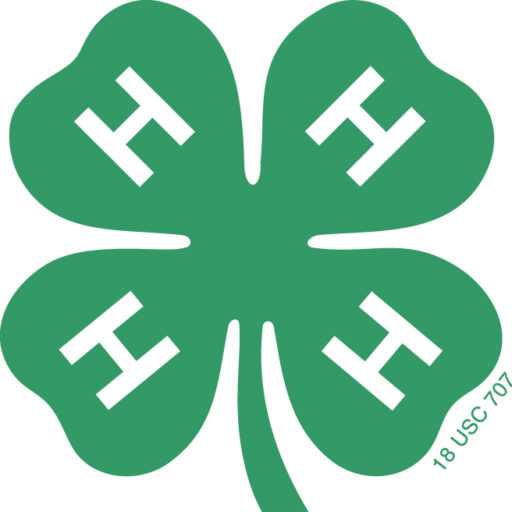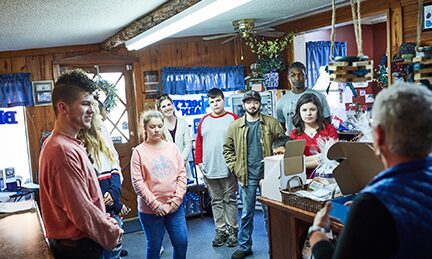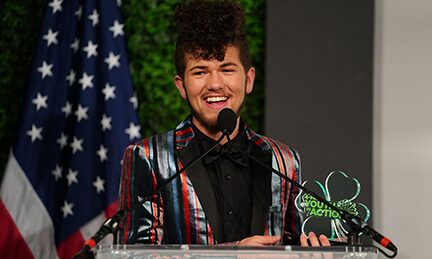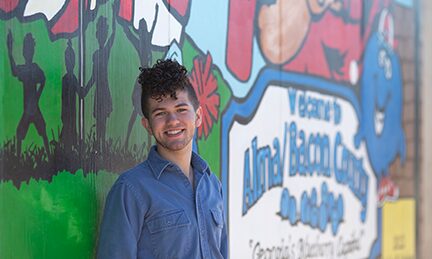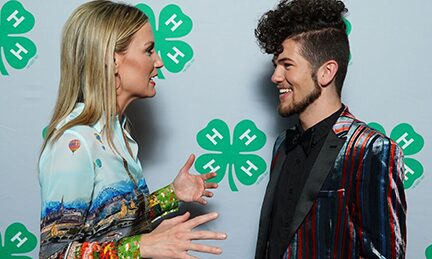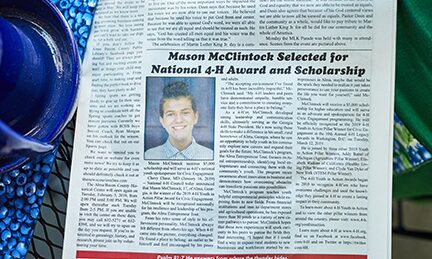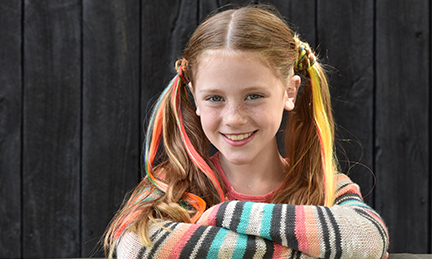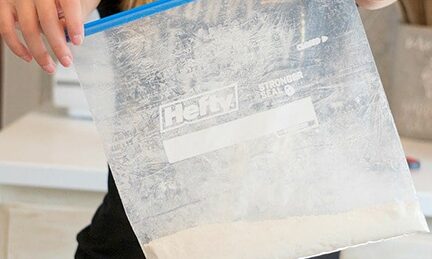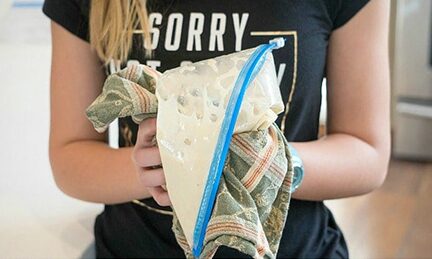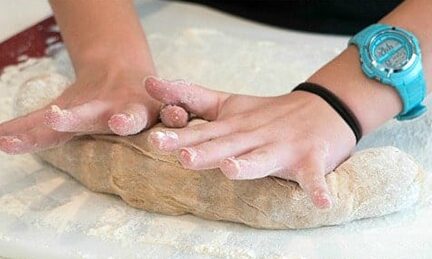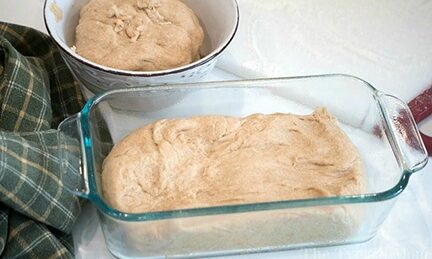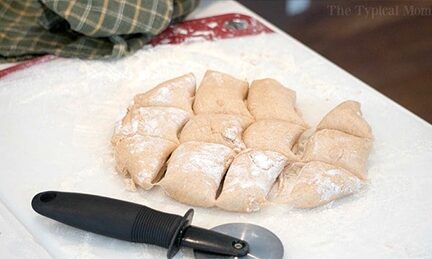The 4‑H Youth in Action (YIA) Program recognizes four young leaders in our core pillar areas: agriculture, civic engagement, healthy living and STEM. Some perks of being a Pillar Winner include a $5,000 higher education scholarship and getting to network with 4‑H celebs, but our favorite perk is the all-expenses paid trip to Washington, D.C. for the National 4‑H Council Legacy Awards. In honor of this year’s 10th Anniversary 4‑H Legacy Awards on March 12, 2019, we’re highlighting the success stories of a few notable past Youth In Action winners.
NATE SEESE – Youth in Action Winner 2012

For Nate, being a Youth In Action winner opened the door to many opportunities and he’s continued his passion for science and agriculture well into his time in college. He currently works at Pat Edger’s blueberry and strawberry genetics lab and is about to graduate with a degree in Crop & Soil Sciences from Michigan State University. He plans to continue working in the lab post-graduation, building his resume and continuing growing his skills before pursuing graduate school.
Nate’s Youth In Action Win? He coordinated with local businesses to donate meat from his 4‑H projects to the local Byron Center food pantry. In just two years, he provided 1,000 lbs of meat to the pantry.
NOSA AKOL – Youth in Action Winner 2015

Nosa received a scholarship from the Endwell Rotary & Rotary International to participate in a humanitarian aid trip conducted through the State University of New York (SUNY) where she is currently majoring in Political Science & Diplomacy. In the Spring of 2018, she was accepted into SUNY Oswego’s Study Abroad Program in Seoul, South Korea where she is now an exchange student at Yonsei University, a private research university considered to be the most prestigious university in the country.
Nosa’s Youth In Action Win? 4‑H gave her the confidence and independence to overcome bullying. She also performed research on Women’s Empowerment in South Sudan and helped to build a Hunger Banquet with her 4‑H club. Nosa hopes to one day return to South Sudan so she can “pay it forward” by pursuing a career in international development.
RU EKANAYAKE – Youth in Action, Healthy Living & National Winner 2016

Since winning the Youth in Action Healthy Living & National Award, Ru’s focus has never strayed from healthcare and wellness. At Cornell, she joined the Student Assembly Health & Wellness Committee where she spearheaded a sexual assault prevention initiative that engaged multiple student groups, Greek life, and served almost 700 students.
Through a YIA connection, she interned with the executive policy team at Molina Healthcare where she helped write policy supporting alternatives to prescription opioids, and she interned for the Prostate Cancer Foundation helping to develop policy analysis of the Right to Try legislation. If that’s not enough, she’s currently freelancing there helping to create an online widget to connect prostate cancer patients with applicable trials – all while currently studying in Prague, Czech Republic and serving on the National 4‑H Council Youth Advisory Committee. Her Youth in Action Win? Creating the first 4‑H Healthy Living Blog.
JACOB SHUMAN – Youth in Action, for Agriculture Winner 2016

Since his win in 2016 Jacob has been studying at Ohio State University – Agriculture Technical Institute in Wooster, OH where he’s enrolled in the Agriculture Community Leadership program, specializing in Extension Education and minoring in entomology.
Jacob knows how critical honey bees are to life on earth and has continued to focus on their importance. As a result, he has been working with Dr. Reed Johnson as a research assistant working with honey bees as an extension of his YIA project. Jacob is, the president of the Ohio State University Bee Club, where he began his own research project on Drone Honey Bees, specifically on Drone Congregation Areas. Last summer, Jacob judged the Beekeeping Level I and II projects at the Ohio State Fair, where just six years ago he was a competitor and beginning his career in beekeeping.
His Youth In Action Win? He created Teens Educating Adults & Children about Honey Bees (TEACH B.) He also led live bee education, demonstrations, and lessons on the importance of bees to agriculture and the economy.
AMELIA DAY – Youth in Action, Citizenship/National Winner 2017

Amelia currently works at an Interior Design Firm and recently began getting her Associates of Science in Culinary Arts at Helms College. She was a Georgia 4‑H Camp Counselor for two years and coached the county 4‑H Consumer Judging team to a state win.
Her Youth in Action Win? Her project, Operation: Veteran Smiles, a program that provides care packages and encouragement to veterans in VA hospitals all over the country.. Since being selected as the 2017 4‑H Youth in Action Citizenship & National Winner, her project has blossomed, becoming an official 501c3 corporation. OVS is also the official community service project for U.S. Cellular and Touchstone Energies, and with the help of more than 8,500 volunteers, has delivered more than 14,000 cards, care packages and smiles to veterans across 16 states.
Check out this year’s Youth in Action winners and finalists here!
If you’re ready to help us continue to support exceptional youth across the nation, consider donating $10 in honor of the 10th Anniversary 4‑H Legacy Awards! Your support will help kids learn by doing, grow from failure and develop the skills they need to handle what life throws their way.






